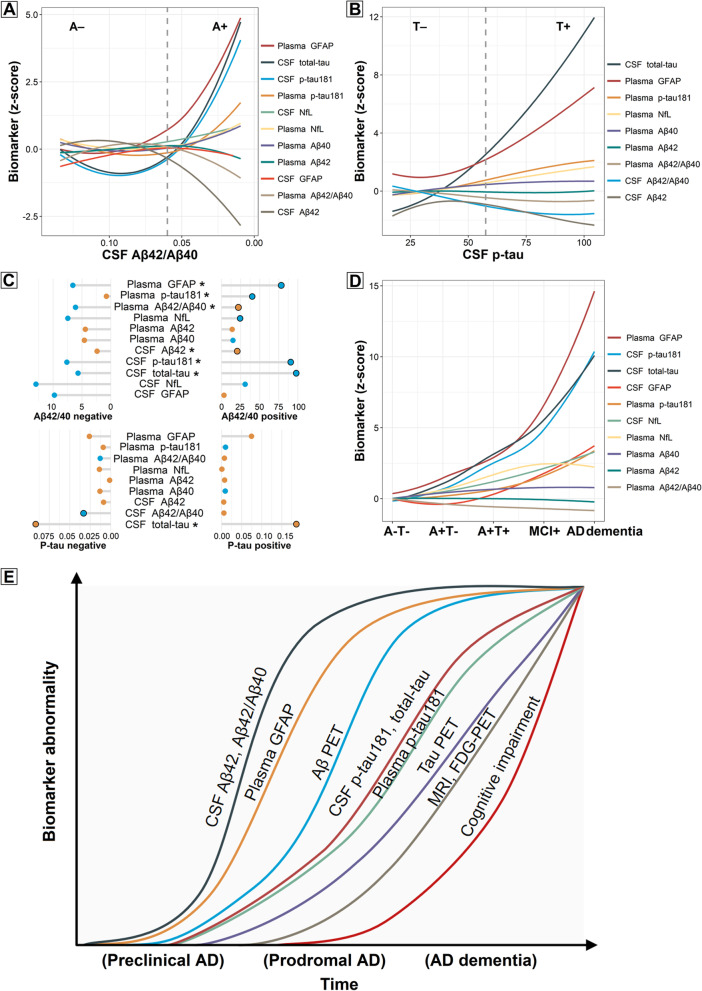Fig. 4.
Trajectories of the biomarkers. Dynamic changes of the biomarkers as a function of CSF Aβ42/Aβ40 (A) or p-tau181 (B) in CU A−T− and preclinical AD stages. The graphs represent the z-score changes of plasma biomarkers using the CU A−T− group as a reference. For comparison purposes, the trajectories of CSF biomarkers were delineated. The solid curves depict biomarker trajectories using robust local weighted regressions. The dashed lines depict the cutoffs for CSF Aβ42/Aβ40 and p-tau. The horizontal axis direction of CSF Aβ42/Aβ40 (A) was inverted. C The relationship between each biomarker and CSF Aβ42/Aβ40 and p-tau181 in CU A−T− and preclinical AD individuals. For each biomarker, we computed the linear regression coefficients (β) and p-values of the z-scores in each of the negative or positive groups. The horizontal grey line represents the absolute value of β, and the color of the solid circle represents the positive (orange) or negative (blue) direction of β. The black circle outside the solid circle indicates the regression p-value<0.05. When the regression slopes between the negative and positive groups were different, a “*” was marked. D Dynamic changes of the biomarkers from CU A−T− to CU A+T*, MCI+, and AD dementia stages. The z-score changes of biomarkers using the CU A−T− group as a reference were delineated. E A model of the approximative orderings of AD-related biomarkers. Approximate stages of the Alzheimer’s continuum (preclinical, prodromal, and AD dementia) were shown on the x-axis. Considering personal reserves and vulnerability factors, we acknowledge that there may be substantial interindividual variations in the timing of different events. Abbreviations: CSF, cerebrospinal fluid; Αβ, amyloid-β; p-tau, phosphorylated tau; AD, Alzheimer’s disease; GFAP, glial fibrillary acidic protein; PET, positron emission tomography; NfL, neurofilament light; MCI, mild cognitive impairment; MRI, magnetic resonance imaging; FDG, fluorodeoxyglucose

